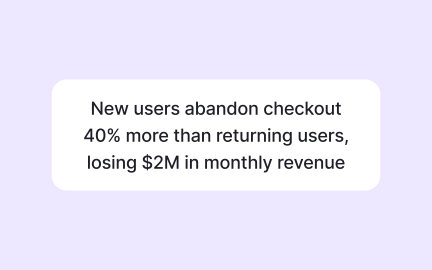Product Development Cycle
The product development cycle is the full process of building a product, from research and design through testing, launch, and iteration.
What is Product Development Cycle?
Your product development lacks systematic progression from idea to market because each stage happens inconsistently without clear processes and decision criteria, leading to delayed launches, budget overruns, and products that miss market opportunities or customer needs.
Most organizations approach product development without structured methodologies for managing complexity, risk, and resource allocation across development phases, missing opportunities to deliver successful products efficiently and predictably.
The product development cycle is a systematic framework that guides products from initial concept through market launch via structured phases including ideation, validation, design, development, testing, and launch, ensuring comprehensive development while managing resources and timelines effectively.
Organizations using structured product development cycles achieve 50% faster time-to-market, 40% fewer development failures, and significantly better resource utilization because systematic processes prevent rework and ensure development decisions serve market success and business objectives.
Think about how automotive companies use rigorous development cycles to manage complex vehicle development across multiple years and departments, or how software companies use systematic development phases to coordinate feature development across engineering, design, and business teams.
Why Product Development Cycle Matters for Delivery Success
Your product development suffers from false starts, scope creep, and missed deadlines because development activities aren't organized systematically, leading to inefficient resource use and products that don't meet market timing or customer expectations.
The cost of unstructured development compounds through every phase where poor decisions create expensive problems later. You get products that miss market windows, exceed budgets, don't meet customer needs, and require extensive post-launch fixes that could have been prevented through systematic development.
What structured product development cycles deliver:
More predictable development timelines and resource planning because systematic phases enable accurate estimation and resource allocation rather than guessing about development complexity and requirements without structured assessment.
When development follows systematic cycles, teams can plan confidently and stakeholders can depend on delivery commitments rather than hoping development will proceed smoothly without unexpected delays and obstacles.
Better risk management and quality control through structured checkpoints that identify problems early when fixes are less expensive rather than discovering issues late in development when changes are costly and disruptive.
Enhanced stakeholder communication and alignment because development cycles provide clear milestones and decision points that enable effective communication about progress, challenges, and resource needs throughout development.
Improved product-market fit and customer satisfaction as systematic cycles include validation phases that ensure products meet customer needs rather than just technical requirements that might not translate to market success.
Higher development efficiency and resource optimization through elimination of rework and false starts that result from poor planning and inadequate validation of product concepts and market requirements.
Advanced Product Development Cycle Strategies
Agile Development Cycle Integration: Adapt traditional development cycles to agile methodologies that enable iterative development while maintaining systematic quality control and stakeholder coordination throughout development.
Cross-Product Development Coordination: Coordinate development cycles across multiple related products rather than independent development that might miss synergy opportunities and resource optimization benefits.
Market-Driven Development Timing: Align development cycles with market opportunities and competitive timing rather than just internal development convenience, ensuring products launch when market conditions optimize success potential.
Platform-Based Development Efficiency: Use platform strategies and reusable components to accelerate development cycles rather than custom development for every product without leveraging existing capabilities and assets.
Step 1: Define Development Phases and Stage Gate Criteria (Week 1)
Establish clear development stages with specific deliverables and decision criteria for advancing to next phases rather than informal development without structured progression and quality gates.
This creates development cycle foundation based on systematic progression rather than ad-hoc development that might skip important validation or quality assurance activities needed for successful products.
Step 2: Plan Resource Allocation and Timeline Management (Week 1-2)
Allocate team members, budget, and timeline across development phases based on systematic estimation rather than hoping resources will be available when needed without advance planning and coordination.
Focus resource planning on critical path activities and dependencies that affect overall development timeline rather than just individual task estimates without consideration of coordination requirements.
Step 3: Implement Validation and Quality Checkpoints (Week 2)
Build systematic validation of customer needs, technical feasibility, and market requirements into development phases rather than just building products without ongoing verification of assumptions and requirements.
Balance comprehensive validation with development speed to ensure quality without creating unnecessary delays that might miss market opportunities or competitive timing.
Step 4: Establish Cross-Functional Coordination and Communication (Week 2-3)
Create systematic communication between engineering, design, marketing, and business teams rather than hoping coordination happens naturally without structured information sharing and decision-making processes.
Step 5: Monitor Cycle Performance and Optimize Processes (Week 3)
Track development cycle effectiveness including timeline accuracy, quality outcomes, and resource efficiency rather than just completing projects without learning how to improve development processes and results.
This ensures product development cycles improve organizational capability rather than just providing structure that doesn't enhance development effectiveness and competitive advantage over time.
If development cycles don't improve delivery predictability, examine whether phases address actual development challenges rather than just creating process overhead that doesn't solve real coordination and quality problems.
The Problem: Development cycles that become bureaucratic processes rather than value-adding structure, creating overhead without proportionally improving development quality or timeline predictability.
The Fix: Focus development cycles on activities that actually improve product success rather than just process compliance, ensuring structure serves development effectiveness rather than just organizational consistency.
The Problem: Rigid development phases that don't adapt to project complexity and market conditions, leading to inappropriate process application that constrains rather than enables successful development.
The Fix: Adapt development cycle structure to project needs rather than one-size-fits-all processes, ensuring development approaches match complexity and risk requirements for specific products and market conditions.
The Problem: Development cycles that don't include adequate validation and customer feedback, leading to products that meet process requirements but don't serve market needs and customer expectations effectively.
The Fix: Integrate customer validation and market feedback throughout development cycles rather than just internal quality control, ensuring products serve customer needs and market requirements systematically.
Create product development cycle approaches that enhance development effectiveness rather than just organizational consistency without improvement in product success and market competitiveness.
Recommended resources
Courses

Product Discovery

Product Analytics

Introduction to Product Management
Lessons

Product Development Stages








